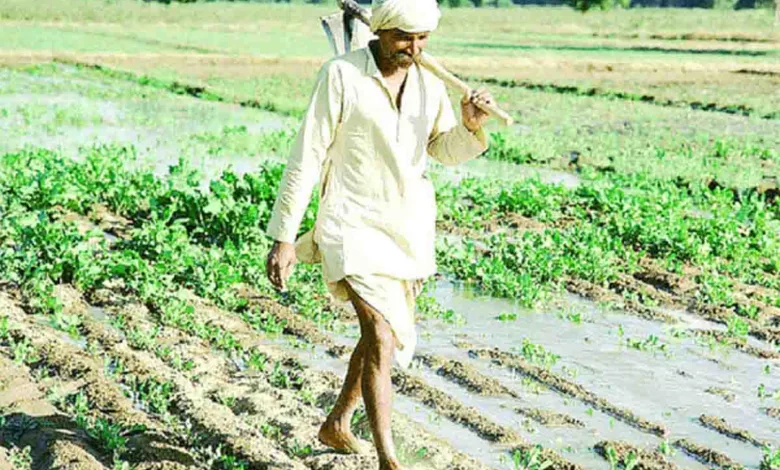Green Revolution and a harvest of violence

Monday, 18 March 2024 | in Guest Column
 Vir Singh
Vir Singh
GUEST COLUMN
Farmers’ agitations seem to have become a regular feature in India. What is the most peculiar in the recent farmers’ agitations are persistent demands raised by farmers marked by sporadic incidences of violence. Recent farmers’ agitations have not represented farmers from all over India. Overwhelming participation and leadership of the Punjab farmers in almost all farmers’ movements reveals a unique story of the Green Revolution Punjab has excelled in. The other states witnessing a huge success of Green Revolution are Haryana and the western part of Uttar Pradesh. Being under the uncomfortable shadows of the Green Revolution, these two states also participate in the farmers’ stirs almost as frequently as Punjab.
The whole story of the Green Revolution and the seeds of violence of all sorts hidden in it can be traced in The Violence of the Green Revolution, a groundbreaking book by Vandana Shiva, offering a profound exploration of the intricate dynamics between Punjab’s agriculture and the far-reaching environmental and societal repercussions triggered by the Green Revolution. Vandana Shiva, a distinguished Indian scholar, environmental activist and author, has long been a vocal advocate for sustainable and equitable agricultural practices. Originally published in the beginning of the last decade of the last century, this book delivers a critical examination of how the Green Revolution impacted Punjab, a region emblematic of the ambitious agricultural transformations that unfolded in the mid-20th century. The Green Revolution, characterised by the widespread adoption of high-yielding crop varieties, chemical fertilizers and pesticides, aimed to enhance agricultural productivity and address global hunger. However, Shiva contends that the outcomes of this revolution in Punjab were anything but positive.
The ecological degradation resulting from intensive chemical farming practices, encompassing issues like soil erosion, groundwater depletion and environmental contamination from agrochemicals are among the worst consequences of the Green Revolution that has affected the whole socioeconomic, cultural and ecological fabric of this wonderful State of India. The socio-economic ramifications, including the concentration of wealth and power in the hands of large agribusinesses, the displacement of small-scale farmers, and the surge in indebtedness within rural communities are some of the clearly visible indicators of the devastating effects of the Green Revolution.
The prevalence of violence in Punjab—both environmental and social — has matured in the womb of the Green Revolution. The ecological disruptions stemming from the Green Revolution have contributed to a cycle of violence, impacting not only the land but also the people reliant on it. A socioeconomic system that disrupts ecological processes inflicts violence against nature which never spares human societies.
No doubt, with the replacement of traditional agriculture with the Green Revolution, our country became not only self-sufficient on the food front but also joined the club of food-exporting countries. But at what cost? Arguments underlining some success stories cannot ignore all the side effects of the Green Revolution that the world, especially India, has experienced. Instead of keeping the flag of Green Revolution high during the Amrit Kaal of the nation, we should think about these side effects and get rid of them.
The Green Revolution has spread a lot of environmental pollution as well as socio-cultural pollution. It has guzzled most of the groundwater resources. It has eroded most of nature’s biodiversity. The living soil has been made to lie on its deathbed! It has also licked public health! Farmers have been induced to commit suicide by trapping them in the vicious cycle of debt. Have you ever heard about farmers committing suicide before the Green Revolution? And now… the Green Revolution has trapped life in the maze of climate change. Nearly one-third of greenhouse gases are being emitted from the agriculture sector alone.
What a diverse achievement of a civilization that 5,000 years ago selected its food from as many as 5,000 types of plants. The Green Revolution has torn the stomach of the hen (soil) that lays the golden eggs. Food security is not a matter of a decade, ten years, fifty years or a century. It is an eternal matter, like human life on earth. Can we divide the prosperity and longevity of humanity into small time periods? Our posterity, our immortality, our development, our prosperity and food security are not the separate issues, nor can they be. Food security is not an isolated issue. This is the core issue pertaining to our civilisation. The Green Revolution has brought us to the conclusion that it is incapable of providing a food security cover and has also alienated us from our food sovereignty. By removing the crown of ownership and freedom from the farmer’s head, the Green Revolution has plunged him into the darkness of slavery and suicide.
Ultimately, the core of food security and sovereignty lies in the unique characteristics of the Earth and traditional ecological agricultural practices. Productivity cannot solely depend on improved seeds; rather, it is an attribute of the ecosystem function that hinges on the fertility of the soil and the integrity of agricultural systems.
(The author is professor emeritus of environmental science, GB Pant University of Agriculture and Technology. Views expressed are personal)






